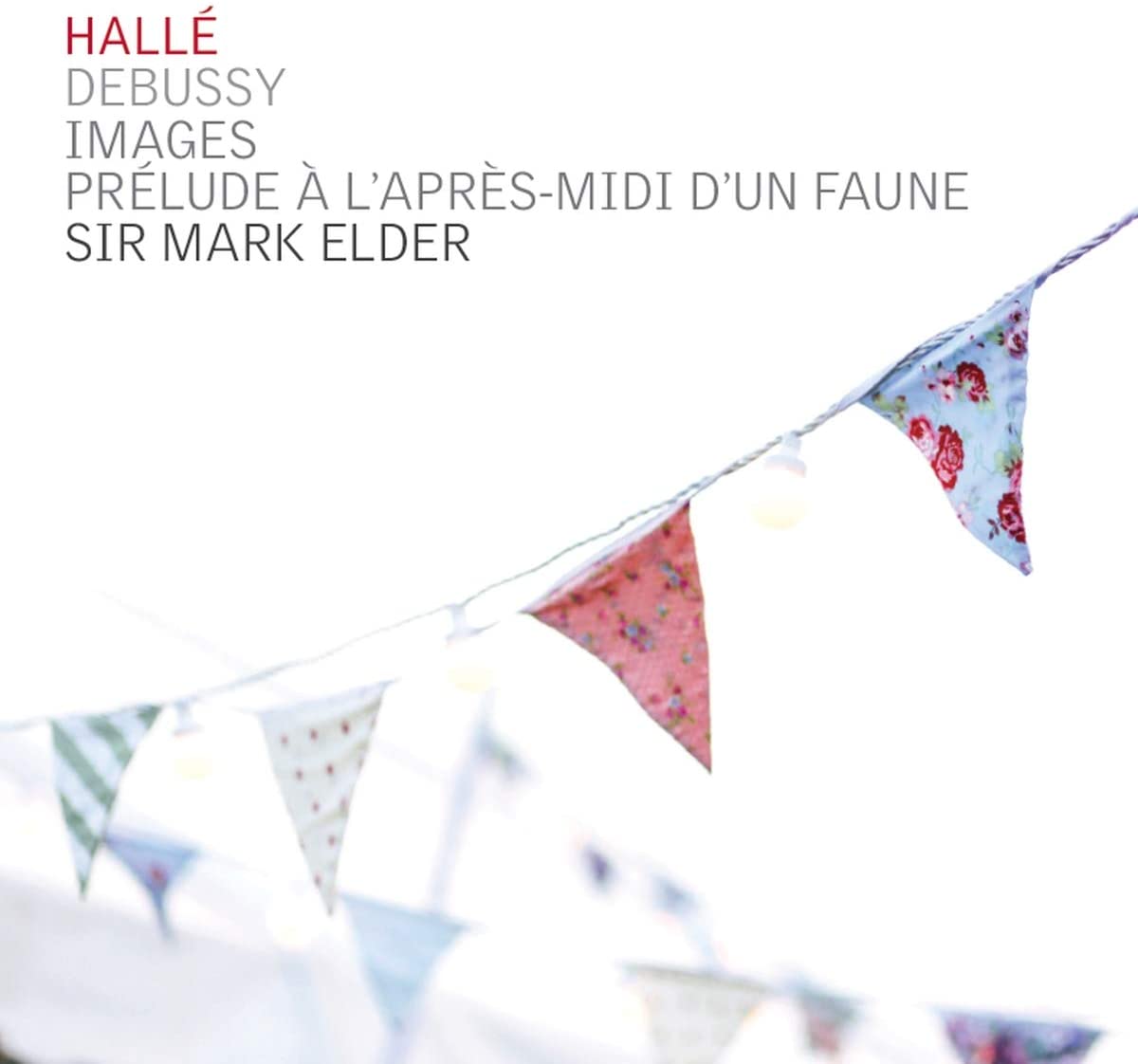DEBUSSY Images. Prélude à l'après-midi d'un faune (Elder)
View record and artist detailsRecord and Artist Details
Genre:
Orchestral
Label: Hallé
Magazine Review Date: 08/2020
Media Format: CD or Download
Media Runtime: 61
Mastering:
DDD
Catalogue Number: CDHLL7554

Tracks:
| Composition | Artist Credit |
|---|---|
| Images |
Claude Debussy, Composer
Hallé Orchestra Mark Elder, Conductor |
| Et la lunde descend sur le temple qui fut |
Claude Debussy, Composer
Hallé Orchestra Mark Elder, Conductor |
| (La) Plus que lente |
Claude Debussy, Composer
Hallé Orchestra Mark Elder, Conductor |
| Prélude à l'après-midi d'un faune |
Claude Debussy, Composer
Hallé Orchestra Katherine Baker, Flute Mark Elder, Conductor |
Author: Tim Ashley
‘Well written, but with that skill born of habit that one has so much difficulty conquering and which is so tedious’, Debussy wrote to his publisher in 1907, in a moment of self-doubt, of the work that eventually became Images. No one, I suspect, would nowadays agree that his orchestral triptych was the product of ‘habit’, but in many ways it was to be his problem piece, occupying him on and off for a total of seven years between 1905 and 1912. The jury is still out among Debussy scholars as to whether André Caplet had a hand in the orchestration of ‘Gigues’, which gave Debussy more trouble than the rest of it, and some have argued that as a set it lacks natural unity, a charge that Mark Elder’s excellent new recording with the Hallé goes some way to counter.
We’re conscious here of a consistent emotional trajectory that contrasts the ambiguities, uncertainties and shafts of melancholy of the outer movements, ‘Gigues’ and ‘Rondes de printemps’, with the brightness, vividness and immediacy of ‘Ibéria’. Speed and pace are finely calibrated, giving the music enough space to allow detail to register without losing sight of momentum or cumulative tension. Wistfulness and regret can be heard in the woodwind solos that frame the central dance of ‘Gigues’, while the constantly shifting time-changes of ‘Rondes’ throw us continually off balance, despite the persistent underlying pulse and the shimmering brilliance of the scoring. The outer movements of ‘Ibéria’, meanwhile, are thrilling in their clarity and precision, with some wonderfully impertinent woodwind solos, and bags of swagger in the pizzicato strumming in ‘Le matin d’un jour de fête’. At the work’s centre, ‘Les parfums de la nuit’ is all heady sensuality, the Hallé strings sounding very lush and sweet, the habanera rhythm sustained with steady, quiet insistence. It’s a very fine achievement indeed.
Its principal companion piece here is Faune, its opening coolly sensuous rather than languid, though the performance gains in tension as it progresses and there’s a real surge of eroticism at its centre. Dating from 1910, La plus que lente is a slow waltz originally written for piano and later expanded and orchestrated, its string textures prevented from cloying by the tangy cimbalom sound that underpins it. The disc also includes the first recording of Colin Matthews’s orchestration of ‘Et la lune descend sur le temple qui fut’ from the second book of piano Images. Debussy’s dissonant parallel chords, fragmentary snatches of melody and hints of gamelan are given a slightly chilly radiance by Matthews’s woodwind, while strings and harp suggest momentary awe and mystery – a work of eerie beauty, played with wonderful finesse.
Discover the world's largest classical music catalogue with Presto Music.

Gramophone Digital Club
- Digital Edition
- Digital Archive
- Reviews Database
- Full website access
From £8.75 / month
Subscribe
Gramophone Full Club
- Print Edition
- Digital Edition
- Digital Archive
- Reviews Database
- Full website access
From £11.00 / month
Subscribe
If you are a library, university or other organisation that would be interested in an institutional subscription to Gramophone please click here for further information.




